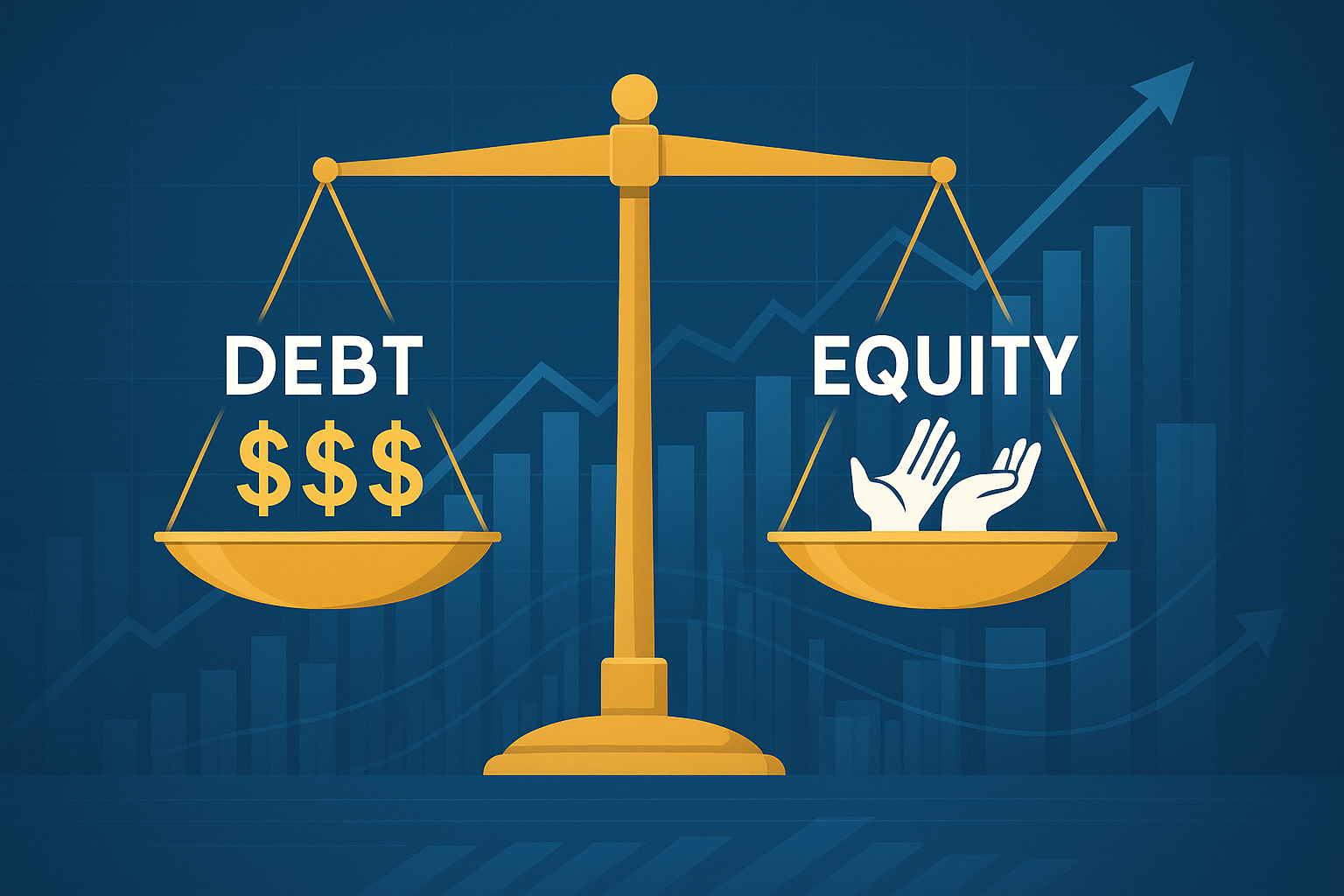1 (800) 584-0324
In a volatile global economy, optimizing capital structures has become one of the most critical priorities for CFOs, investors, and business owners. The right capital structure balances debt, equity, and hybrid financing to minimize costs, mitigate risks, and fuel sustainable growth.
In 2025, businesses face new challenges—tight bank lending, rising private credit, and shifting investor demands. Agile Solutions helps companies across North America navigate these complexities, structuring financing strategies that support both resilience and expansion.
Here are five proven strategies for optimizing capital structures in 2025.
1. Balancing Debt and Equity for Flexibility
The foundation of any capital structure is the balance between debt and equity. Companies must weigh:
- Debt advantages: Lower cost of capital, tax deductibility of interest, and retained ownership.
- Equity advantages: Flexibility with no fixed repayment obligations, but at the cost of dilution.
A well-optimized capital structure blends both, ensuring financial flexibility while preserving long-term growth.
2. Leveraging Private Credit and Alternative Lending
As banks maintain conservative lending standards, private credit is filling the gap. For many mid-market companies, private credit offers:
- Higher leverage ratios than banks
- Customizable repayment terms
- Faster approvals for time-sensitive deals
Integrating private credit into the mix is a practical way to optimize structures when traditional bank loans fall short.
3. Using Hybrid Financing Instruments
Hybrid instruments—such as convertible debt, mezzanine financing, or preferred equity—play a growing role in 2025. These solutions combine elements of debt and equity to:
- Provide investors with upside potential
- Lower the immediate cash burden on companies
- Offer flexible exit and repayment structures
Hybrid financing helps companies strengthen balance sheets without overleveraging.
4. Managing Risk with Liability Restructuring
Debt restructuring remains a core strategy in optimizing capital structures. By renegotiating terms, extending maturities, or refinancing at lower rates, businesses can improve liquidity and reduce financial stress.
This proactive approach allows companies to maintain operational stability while preparing for growth.
5. Aligning Capital Structure with Strategic Goals
No two companies have identical financing needs. A tech startup requires different structures than a manufacturer or real estate developer. Effective capital optimization aligns financing choices with:
- Growth stage and industry
- Cash flow stability
- Long-term expansion plans (M&A, international growth, ESG commitments)
At Agile Solutions, we help companies customize capital structures that directly support strategic objectives.
Seasonal Outlook for 2025
With interest rates stabilizing and capital markets evolving, optimizing capital structures is critical for businesses looking to attract investors, lower costs, and maintain flexibility. Companies that diversify across debt, equity, and hybrid solutions will be best positioned for resilience and growth.
Reference Summary
Looking to start optimizing capital structures for your business in 2025? Agile Solutions helps companies across the U.S. and Canada balance debt, equity, and alternative financing to achieve growth and resilience.
👉 Book a consultation today at agilesolutions.global or email us at info@agilesolutions.global
#CapitalStructure #CorporateFinance #DebtRestructuring #PrivateCredit #BusinessGrowth #AgileSolutions



